
All flags of Georgia. The official flag of the country, flags of cities, municipalities and territories.
Unravel the history and symbols of the flags of Georgia. From the official flag of the country to the flags of municipalities and cities — find out what they represent and what unique features they have. Immerse yourself in the world of colors and symbols that reflect the rich cultural and historical heritage of Georgia through its flags.
Flag of Georgia
Description
The modern national flag of Georgia is a white rectangular canvas decorated with five crosses: one large one in the center and four smaller ones in each corner. The central cross, known as the St. George cross, is surrounded by four smaller equilateral crosses, known as the Bolnisi-Katskhi crosses, located in four quadrants. All the crosses are red, which symbolizes courage, bravery, justice, and love.
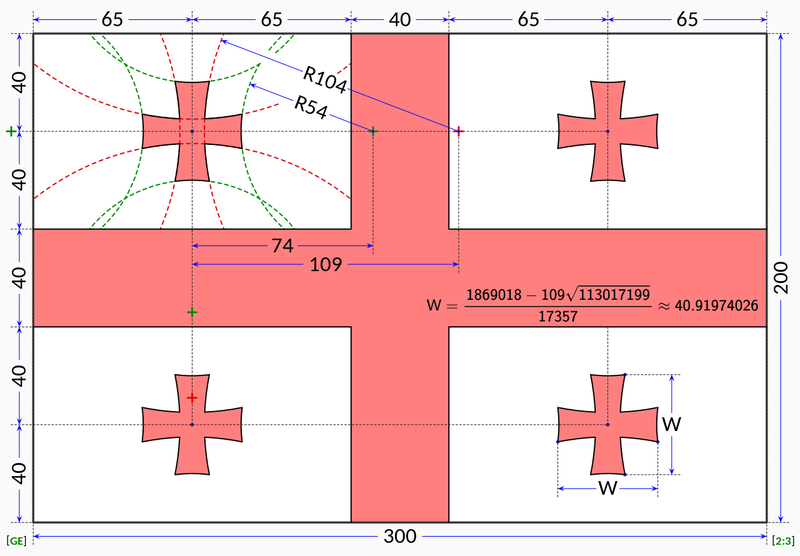
These elements of the flag carry deep religious and cultural meaning. The central cross represents Jesus Christ the Savior, and the four small crosses around it symbolize the four evangelists. This arrangement of crosses is a common Christian symbol, widely used in Christian iconography.
The white color of the flag, also known as silver in heraldry, signifies innocence, chastity, purity and wisdom. Thus, the color palette of the flag of Georgia not only creates a visually attractive image, but is also deeply symbolic, reflecting key aspects of the national identity and cultural values of the Georgian people.
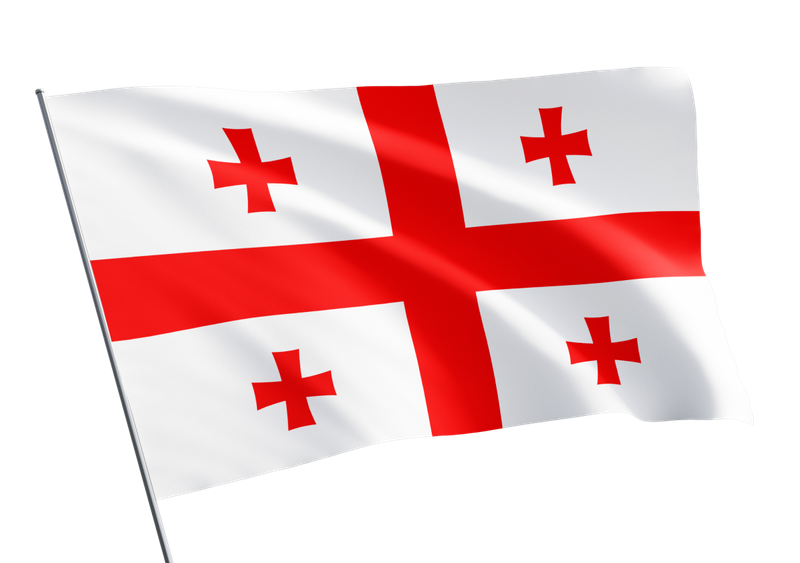
Story
The flag of Georgia, adopted in 2004 by a special "Law on the Flag", has a significant historical basis and symbolism. Before its official approval by the parliament, this flag was used by the political party "United National Movement", headed by Mikheil Saakashvili. The historical roots of the flag go back to the distant past.
Researcher Iosif Bichikashvili points out that images of five crosses similar to those on the flag were found in the ruins of the Nekre Church (not later than the 6th century), as well as on the facades of the churches of St. George in Bochorma (10th-11th centuries) and Chkhari (13th-14th centuries), and in Dmanisi (14th-15th centuries).

It is particularly interesting that a white flag with the red cross of St. George, similar to the modern national flag, was supposedly used in the 5th century by King Vakhtang I Gorgasali. There is also evidence that Queen Tamar used a flag with a dark red cross and a star on a white field.
In addition, on the Pizzigani brothers' map, dating from 1367, Tbilisi is marked with a Jerusalem cross, consisting of a large cross surrounded by four smaller crosses. Georgian historian D. Kldiashvili suggests that this symbol was adopted in Georgia during the reign of George the Brilliant.
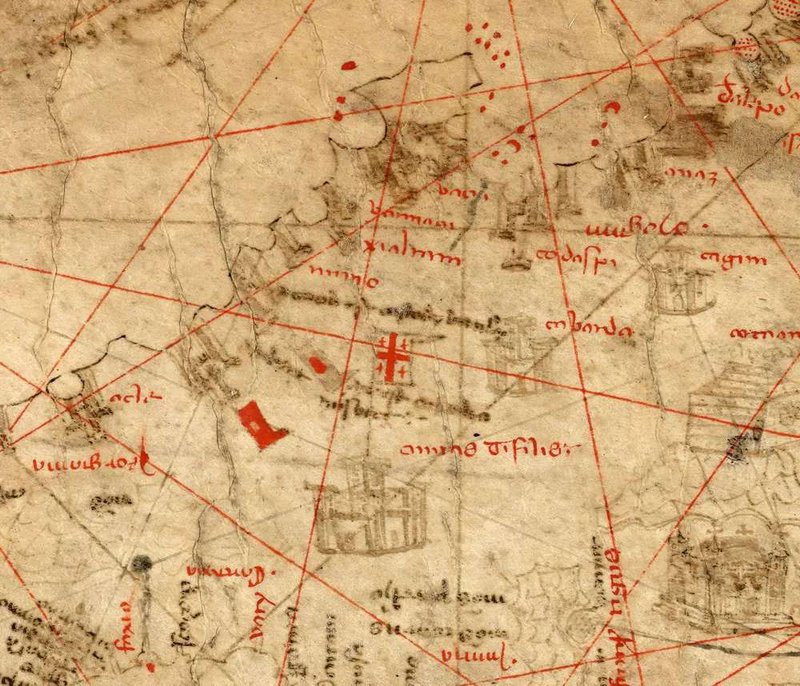
Thus, the current flag of Georgia is not only a symbol of the modern state, but also reflects its rich historical heritage.
Previous flags of Georgia
Flag of the Kingdom of Kartli-Kakheti
In 1762, the foundation of the Kingdom of Kartli-Kakheti was laid, a historically important stage in the development of the Georgian state. This kingdom arose as a result of the unification of two eastern Georgian kingdoms: Kartli and Kakheti. The unification of these two regions was a significant step towards the formation of a unified Georgian state, which was of great importance for the regional political and cultural history.
The flag of the Kingdom of Kartli-Kakheti, as reconstructed by some modern historians, was a straight white cross on a black background. This flag design is symbolic, as it combines a strong contrast between white and black, which can symbolize the unity of opposites or the balance between different elements. The white cross on a black background can also carry religious connotations, indicating the Christian identity of the Georgian people.
Flag of the Georgian Democratic Republic
On May 26 (June 8, new style), 1918, after the dissolution of the Transcaucasian Sejm, members of the Georgian National Council proclaimed the independence of Georgia. This historic moment was marked by the raising of the flag over the building of the Palace of the Viceroy of the Caucasus, where the Transcaucasian Sejm had previously met.
The flag raised on this significant day was created by the sculptor Yakov Nikoladze. It was a dark red (dogwood) cloth with a black and white canton. The canton was half the width of the flag, and its length was 3/8 of its length, with the ratio of the width to the length of the flag being 1:2. For creating the flag, Nikoladze was rewarded by the Georgian government with 3,000 rubles.
The color symbolism of the flag is deeply symbolic: the dogwood color symbolized the country's bright past and joy; the black stripe symbolized the tragic period in Georgia's history under Russian rule; the white stripe symbolized the peaceful development of the nation and hope. These colors go back to the banners of the Georgian kings of the 18th century, which depicted white oblique crosses on dogwood cloths.

The flag was first publicly presented on March 25, 1917 in Kutaisi at a rally of the Georgian National Democratic Party. Then, on September 10, 1917, the Georgian law established that there should be a white stripe at the top of the canopy. Since September 20, 1917, after the approval of the coat of arms of Georgia, it began to be depicted in the center of the free part of the official flag of government bodies. The diameter of the coat of arms was equal to half the length of the canopy, that is, 3/16 of the length of the flag.
It is worth noting that when making flags, the established proportions of width and length, as well as the width of the canopy and the order of the stripes in it, were not always observed, which adds an element of uniqueness and diversity to the historical flag.
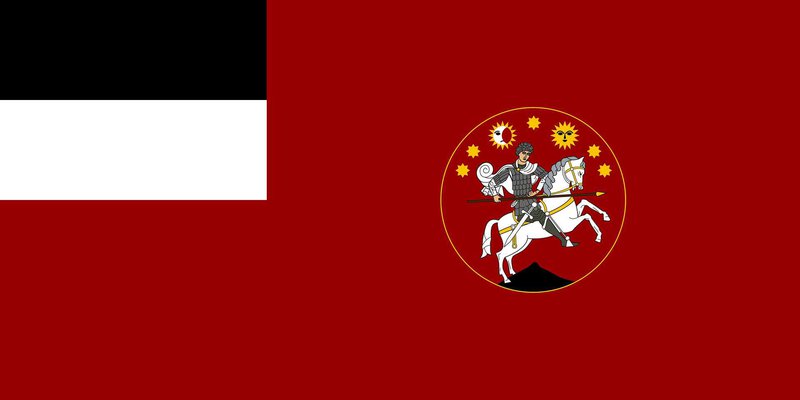
Flags of the Georgian SSR
The Georgian Democratic Republic, Georgia's first modern state formation, did not last long. In 1921, after the Soviet invasion, a new stage in Georgia's history began, reflected in changes to the state symbols.
With the establishment of the Georgian Soviet Socialist Republic in 1922, a new flag was adopted. It was a red cloth with the inscription ССРГ (Soviet Socialist Republic of Georgia) in the upper left corner. This flag design symbolized Georgia's accession to the Soviet Union.

In 1930, another change took place: the inscription ССРГ on the flag was replaced with the Georgian version — საქართველოს სსრ (“SAKARTVELOS SSR/Georgian SSR”). This change reflected the desire to use the Georgian language in official symbols.
In 1940, the Supreme Council of Georgia adopted a new flag. The color of the inscription was changed to gold, and the flag now featured the abbreviation USSR (სსსრ), which emphasized Georgia's belonging to the Soviet Union.
On April 11, 1951, a new flag was introduced that became one of the most recognizable symbols of the Georgian Soviet era. It was a red canvas with a blue upper stripe. In the upper left corner was a blue square, in the center of which was a circle with a red hammer and sickle under a red five-pointed star. From the circle to the sides of the square 24 red rays diverged. A unique feature of this flag was that the hammer and sickle were made in red, and not the traditional gold - this distinguished the flag of the Georgian SSR from the flags of other union republics.
Flag of Georgia (1990-2004)
November 14, 1990 marked an important moment in the history of Georgia's national symbols: the Supreme Council of the Georgian SSR adopted a resolution to return the flag of the Georgian Democratic Republic, which had been used between 1918 and 1921. This move was a symbol of a return to national roots and aspirations for independence during the collapse of the Soviet Union.
Military flags
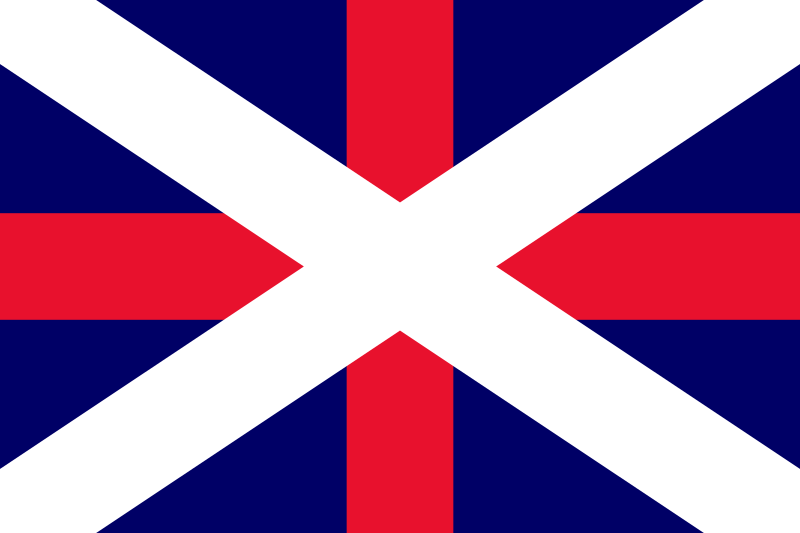

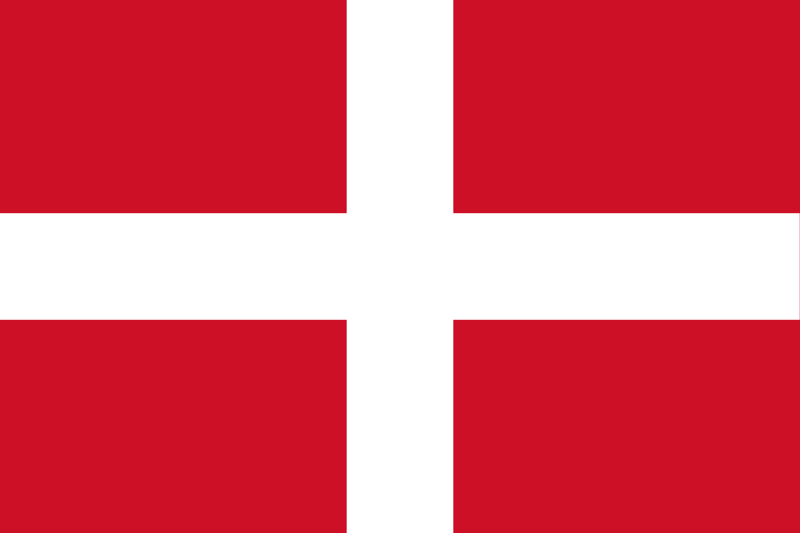
Religious flags
The flag of the Georgian Orthodox Church is a unique symbol that combines the religious and cultural traditions of Georgia. Although it is similar in design to the national flag of Georgia, there are differences between the two. The church flag consists of a white cloth on which is depicted a red cross with a blue border - this is the cross of St. Nino, one of the most revered saints in Georgia.
The cross of St. Nino has a special meaning in Georgian Christianity and is often associated with the adoption of Christianity in Georgia. An additional unique element of the flag of the Georgian Orthodox Church is its use in the form of a gonfalon. A gonfalon is a type of flag in which the cloth is attached not to a vertical pole, but to a horizontal crossbar. This gives the flag a special, solemn look and is often used in church processions and religious ceremonies.
Flags of the regions
Flag of Adjara
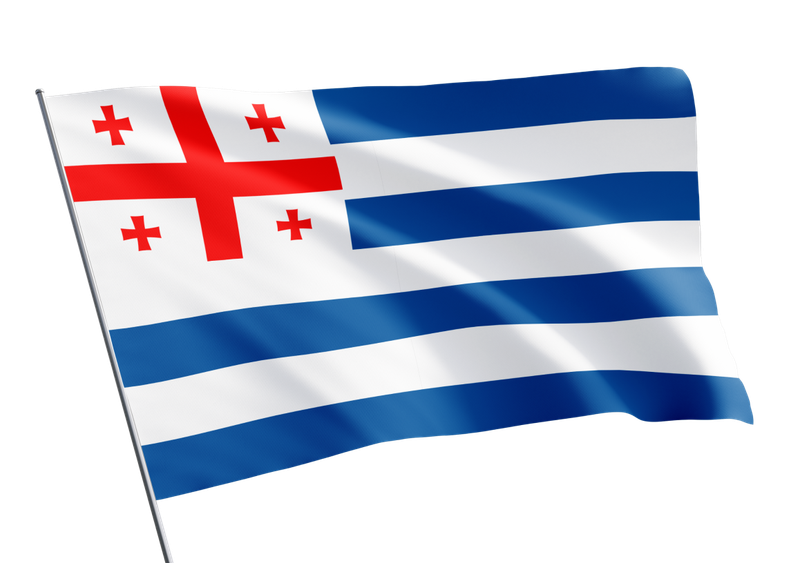
Flag of Abkhazia

Flags of municipalities and cities
Flag of the city of Tbilisi
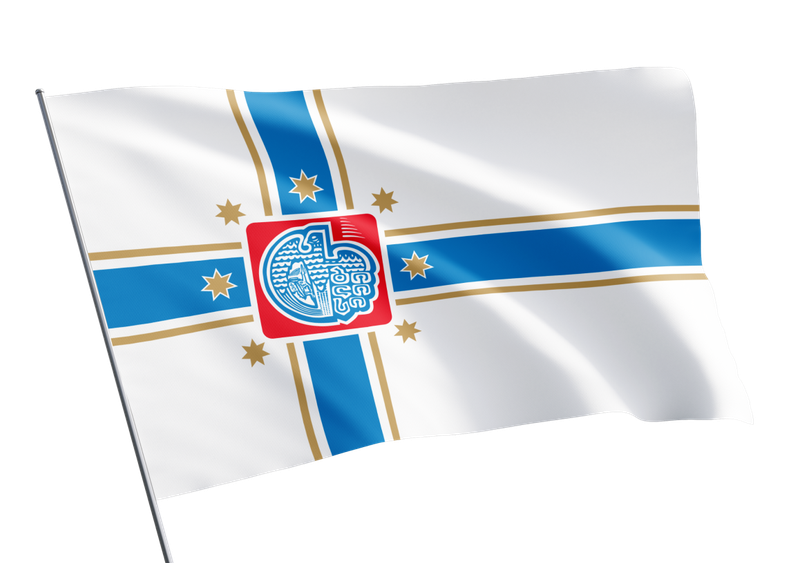
Flag of the city of Batumi
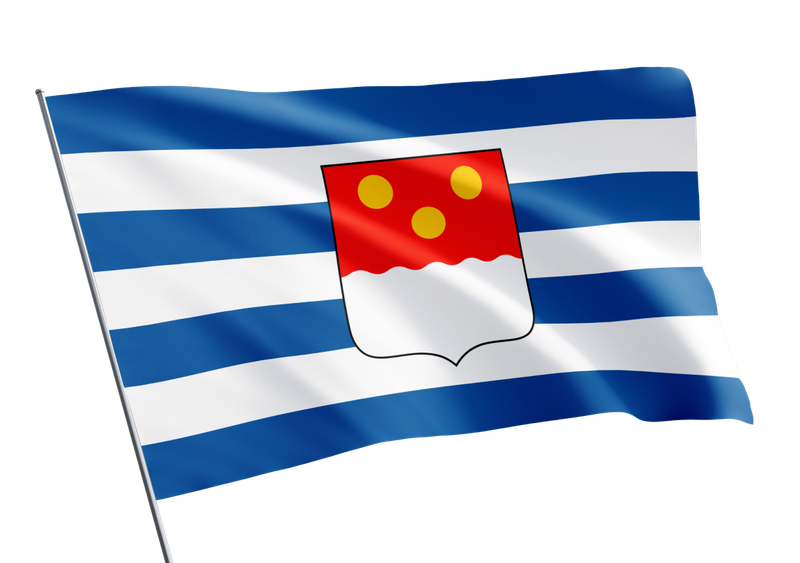
Flag of the city of Kutaisi
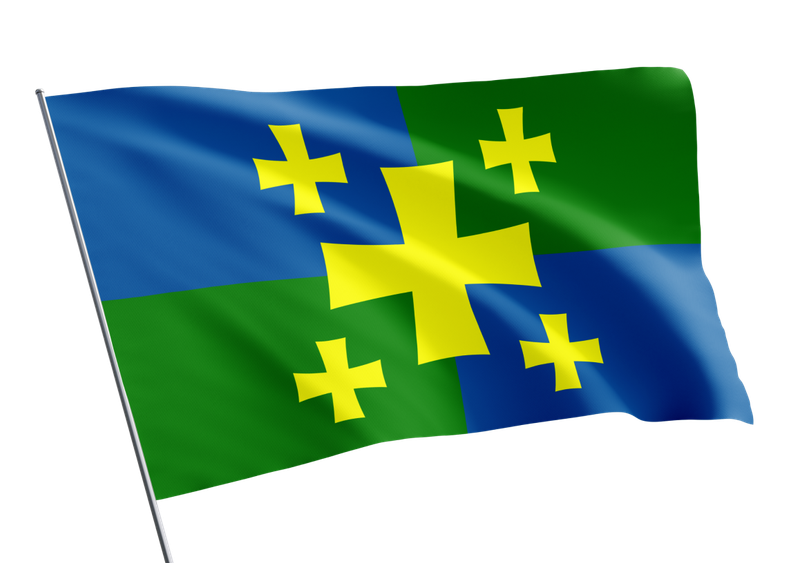
Flag of the city of Rustavi

Flag of the Abasha Municipality
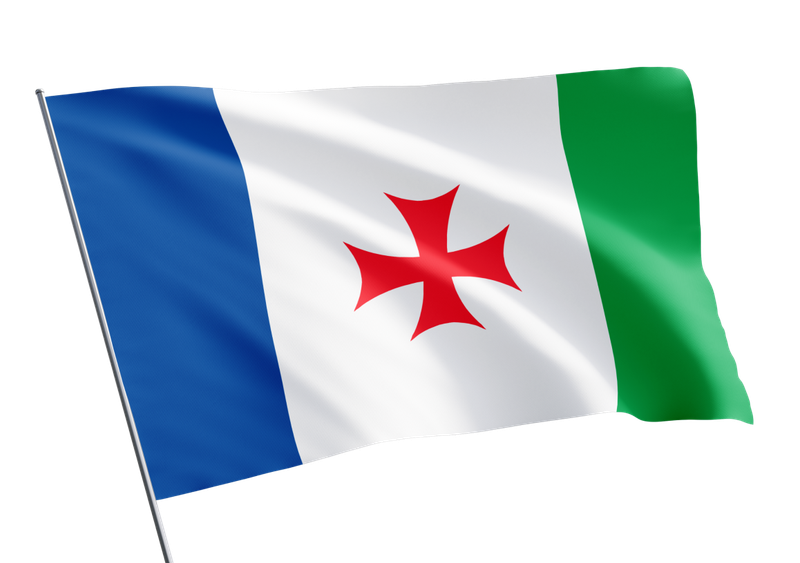
Flag of the Adigeni Municipality
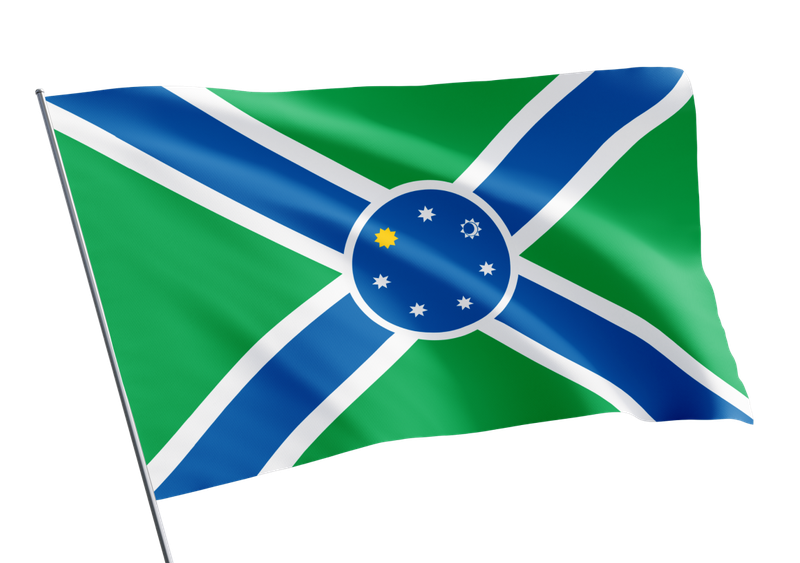
Flag of the Municipality of Ambrolaura
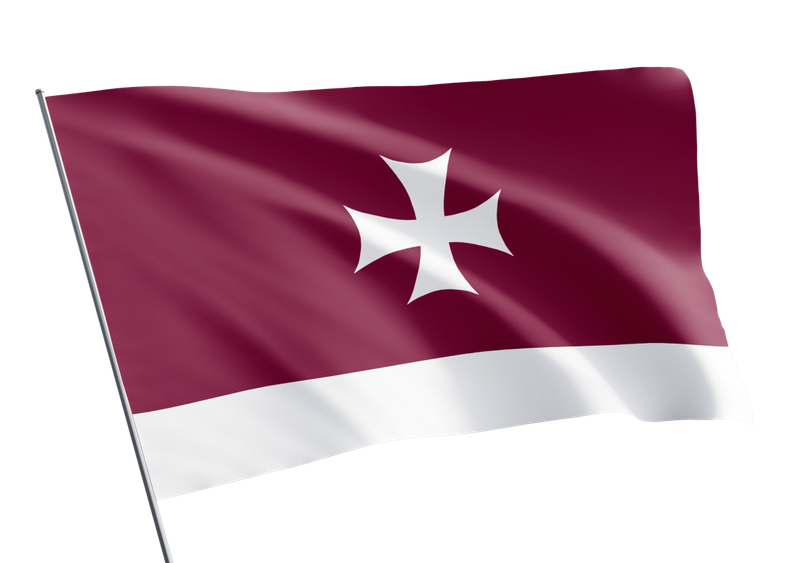
Flag of the Aspindza Municipality
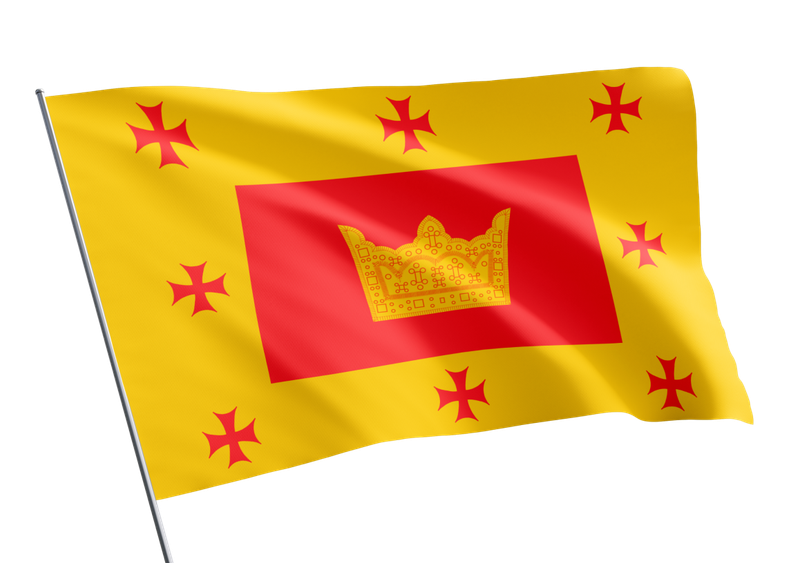
Flag of Akhalgori municipality
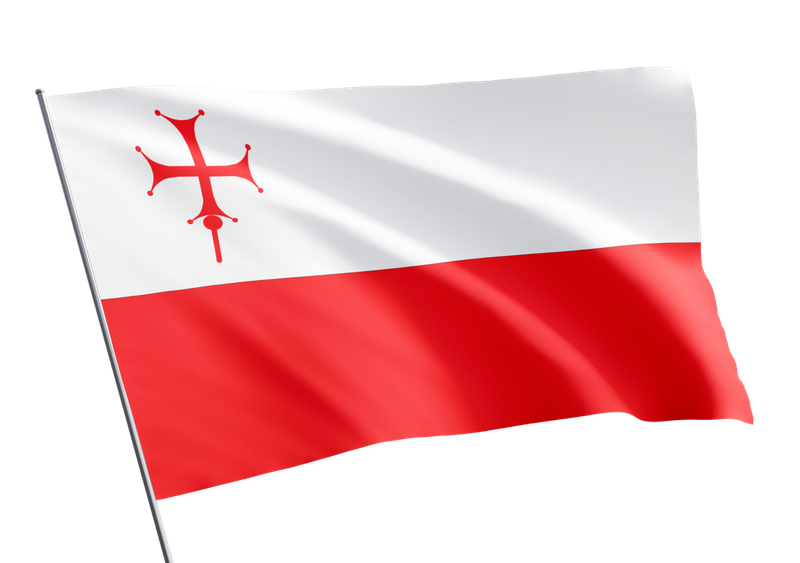
Flag of Akhalkalaki municipality
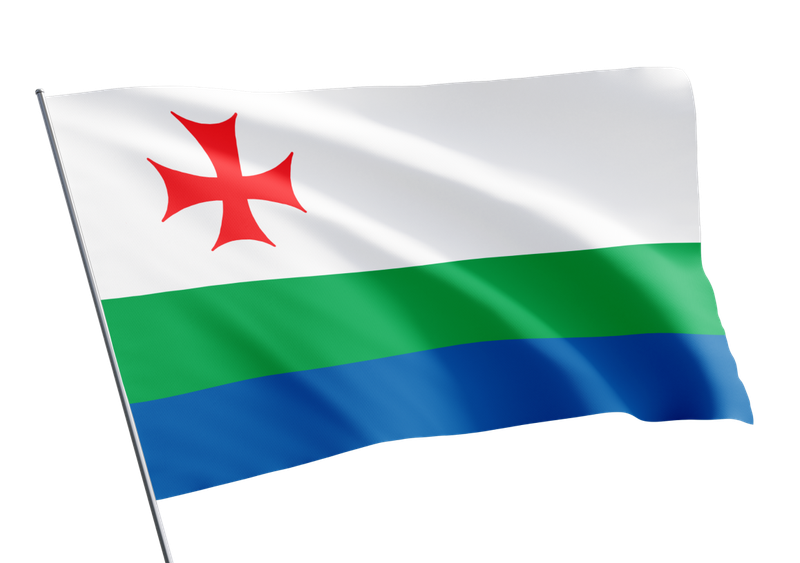
Flag of Akhaltsikhe Municipality
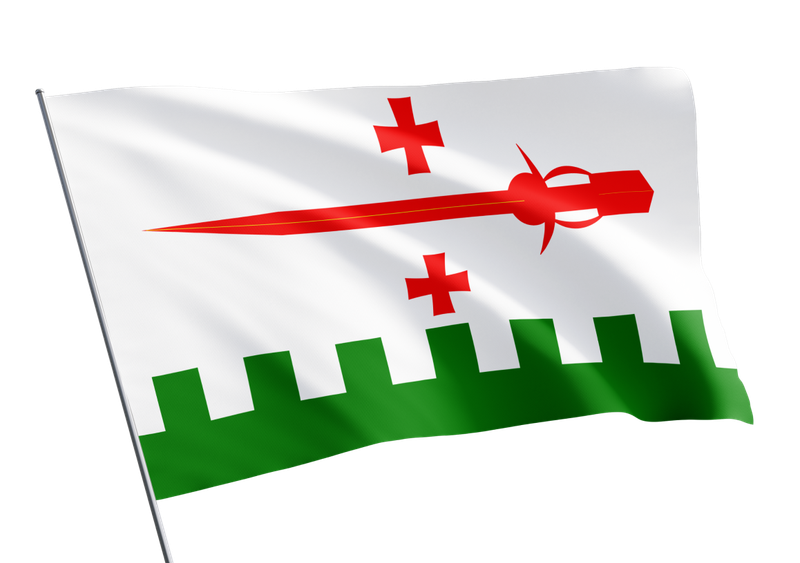
Flag of the Akhmeta municipality
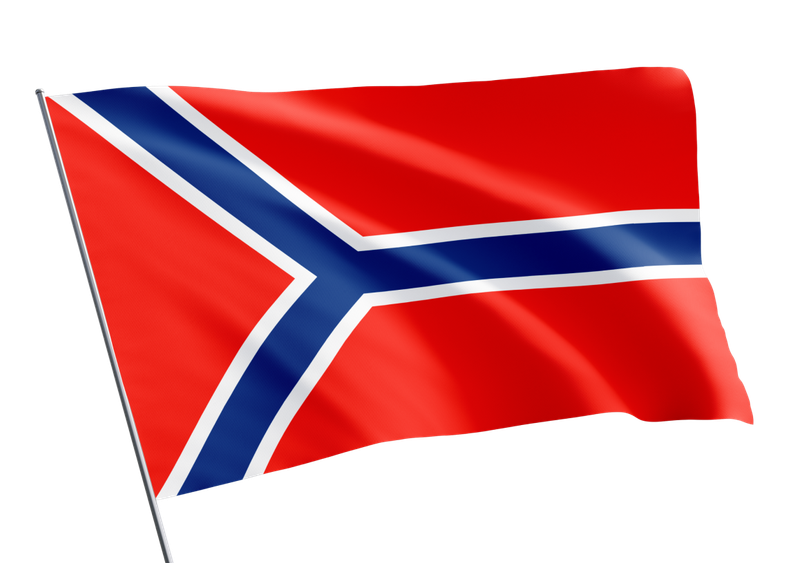
Flag of Baghdat Municipality
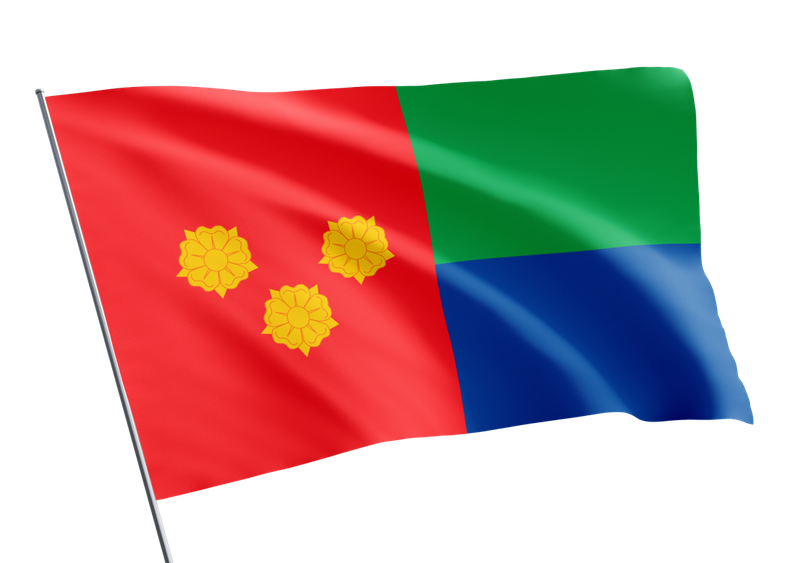
Flag of Bolnisi Municipality
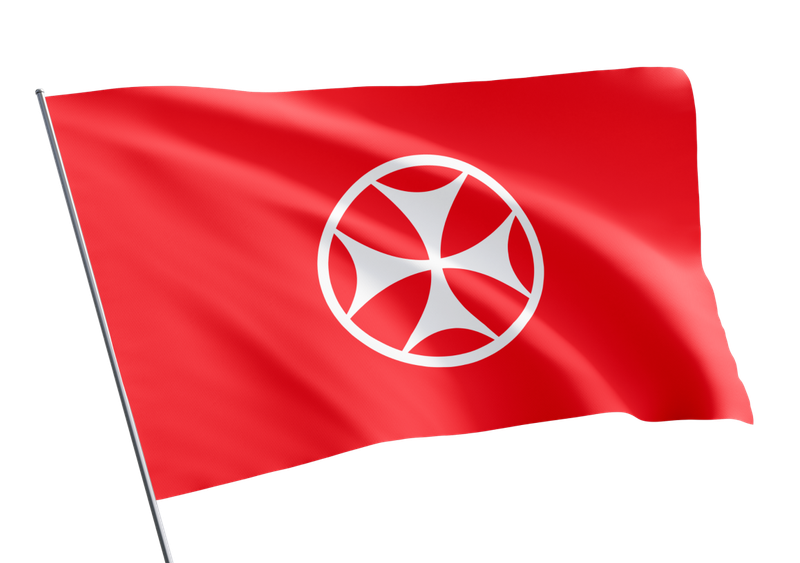
Flag of Borjomi Municipality
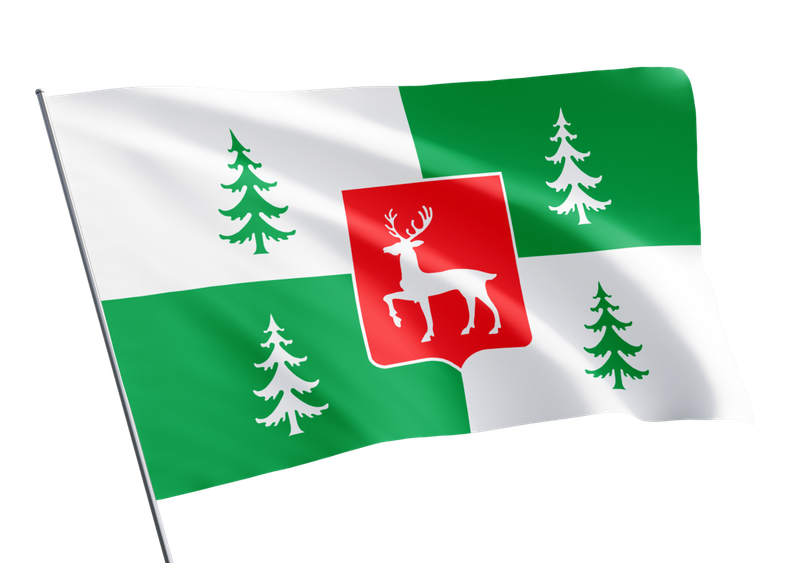
Flag of Van Municipality
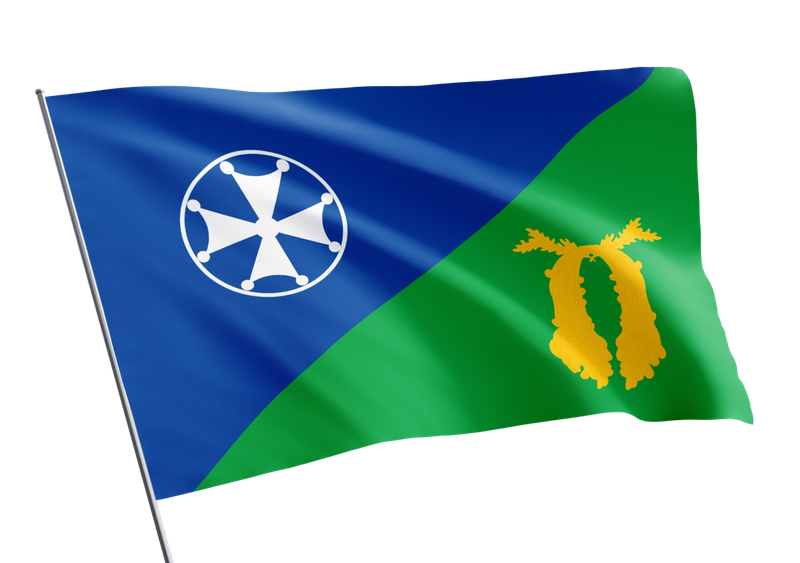
Flag of the Gagra Municipality
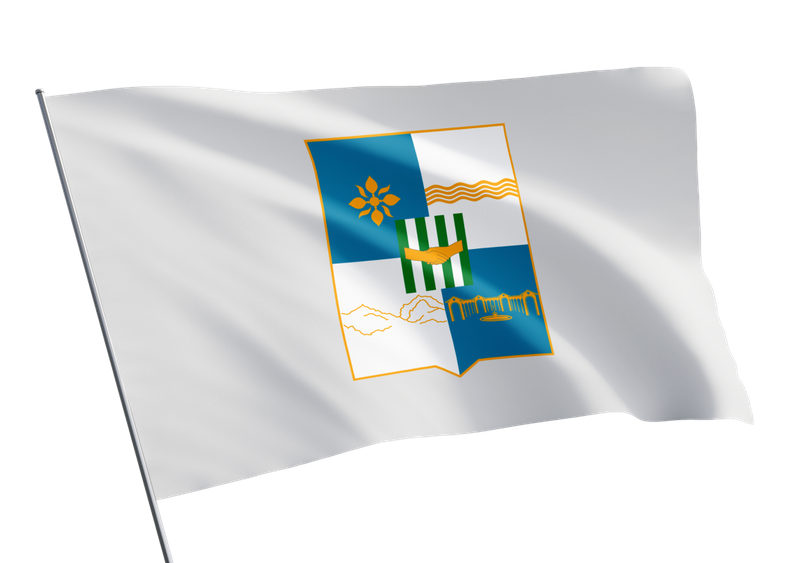
Flag of Gardabani Municipality

Flag of the Gori Municipality
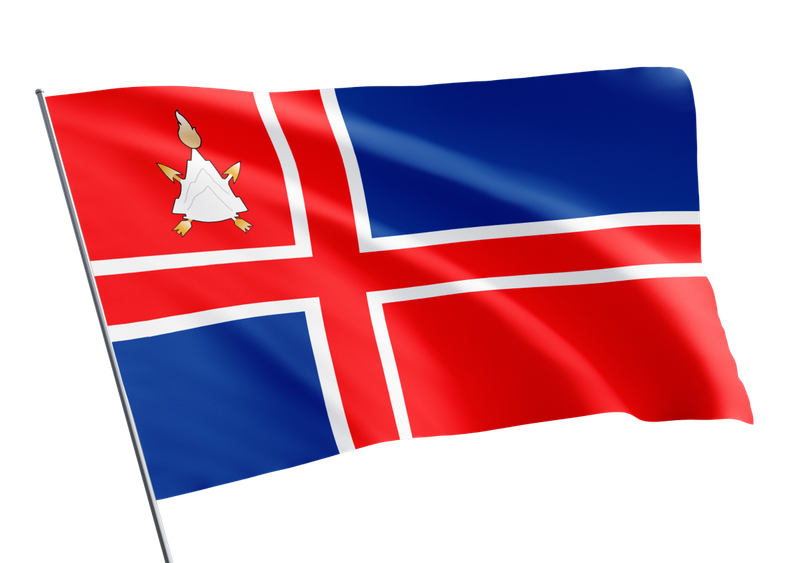
Flag of Gudauta Municipality
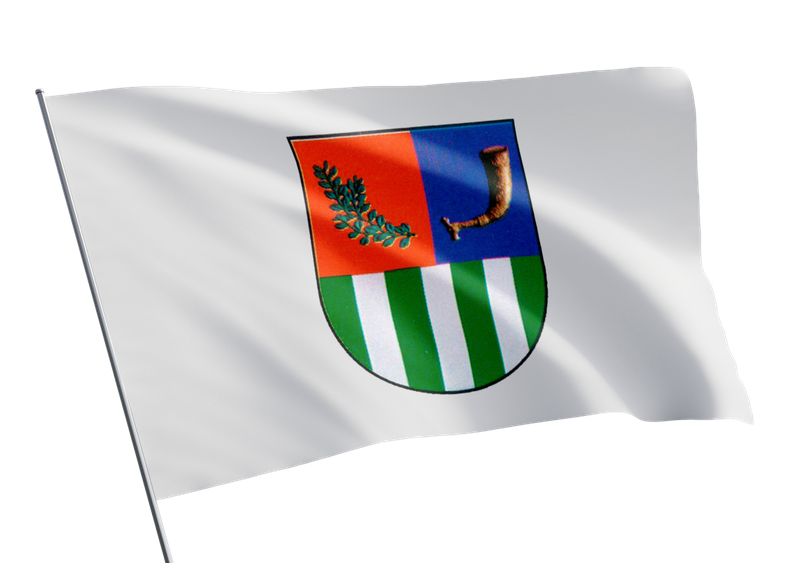
Flag of the Gurdjaani Municipality
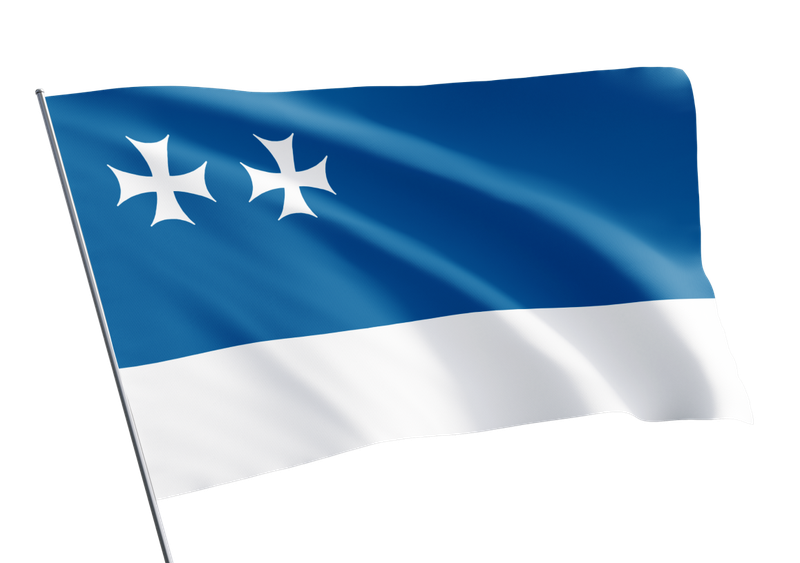
Flag of Dedoplistskaro Municipality
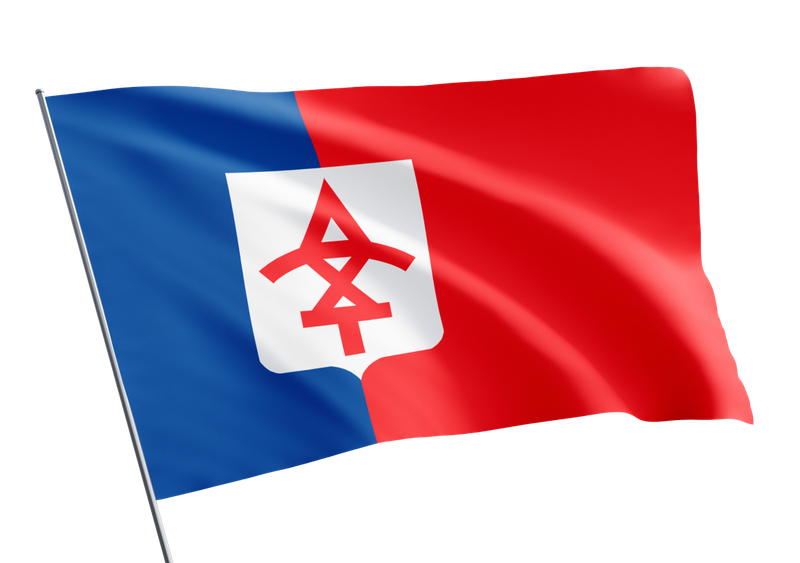
Flag of the Dmani Municipality
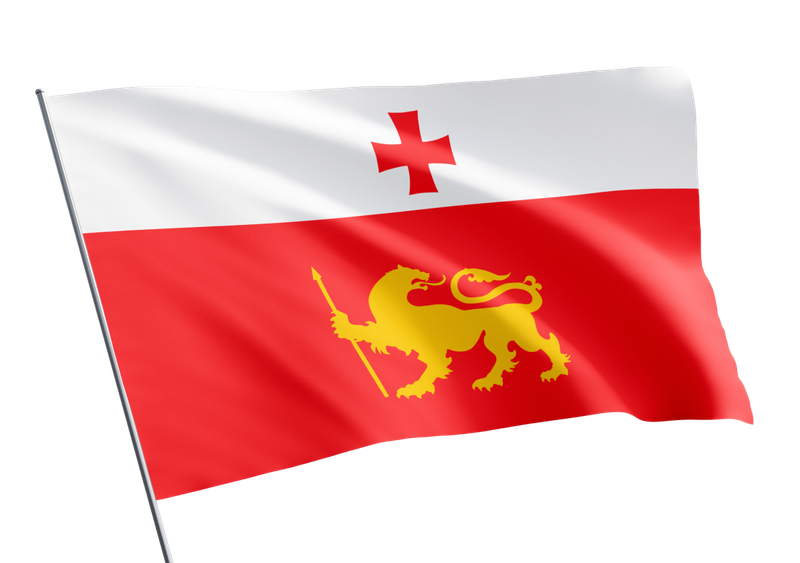
Flag of the Dusheti Municipality
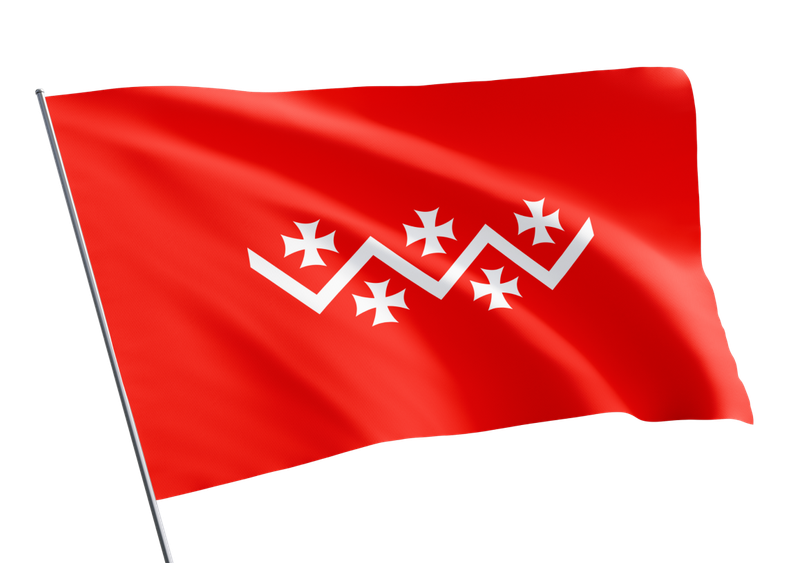
Flag of Zestafoni Municipality
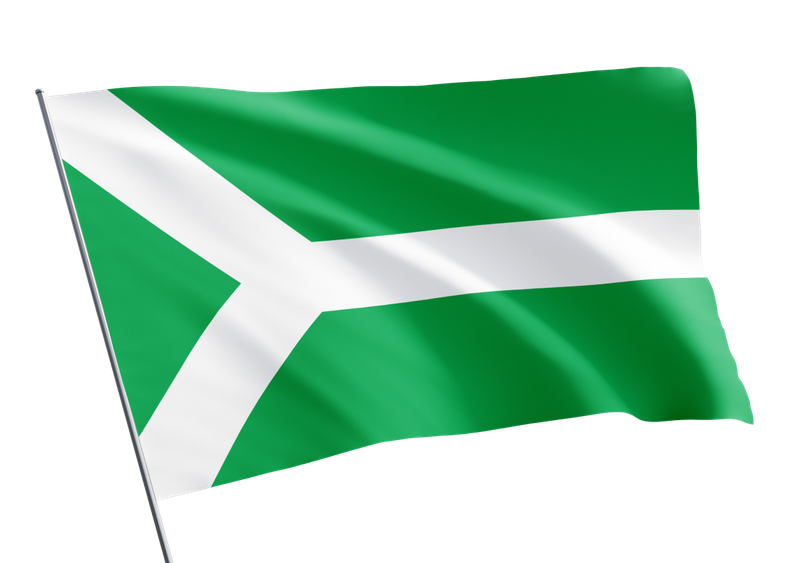
Flag of the Zugdidi municipality
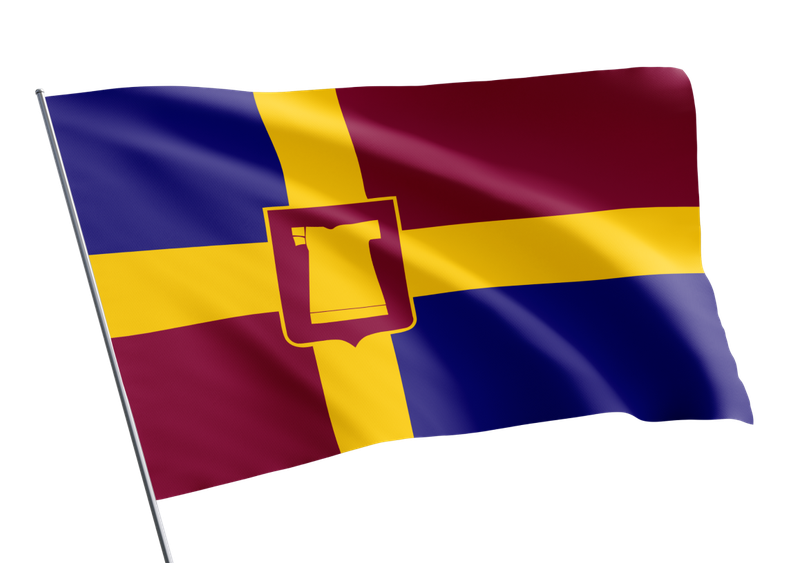
Flag of Kazbegi Municipality
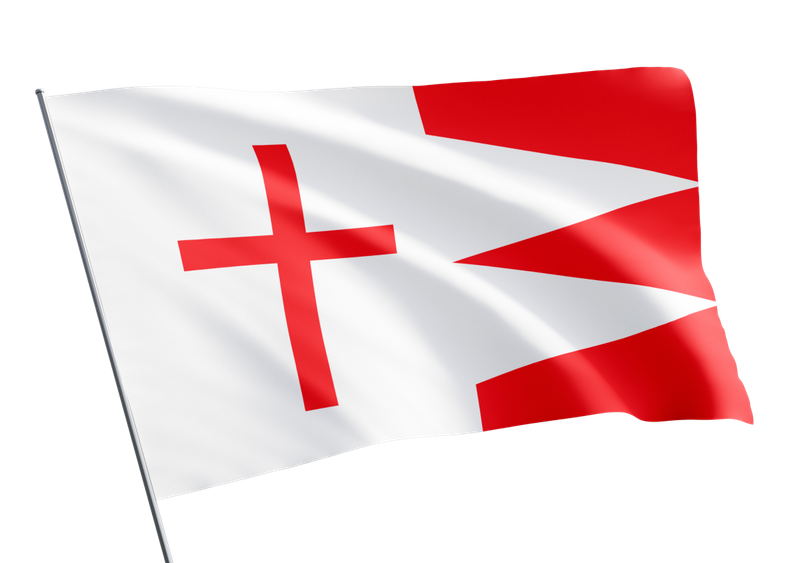
Flag of the Karelian municipality
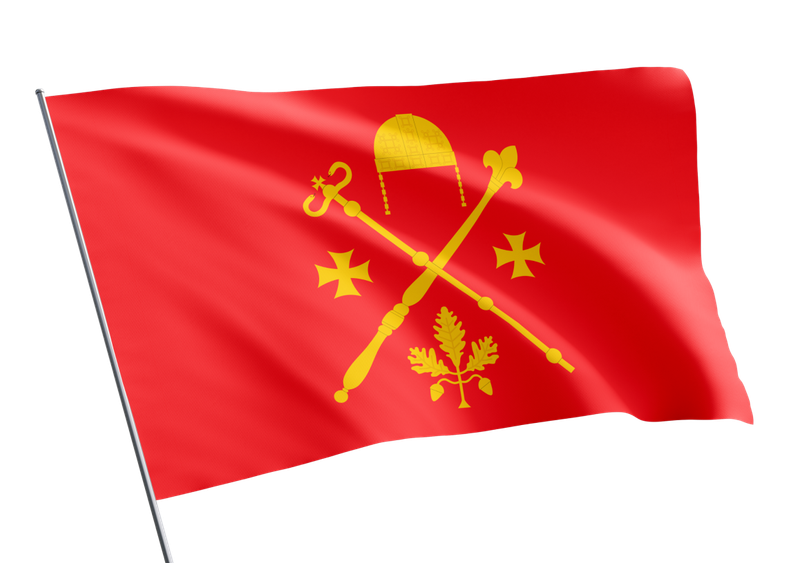
Flag of Kaspi Municipality
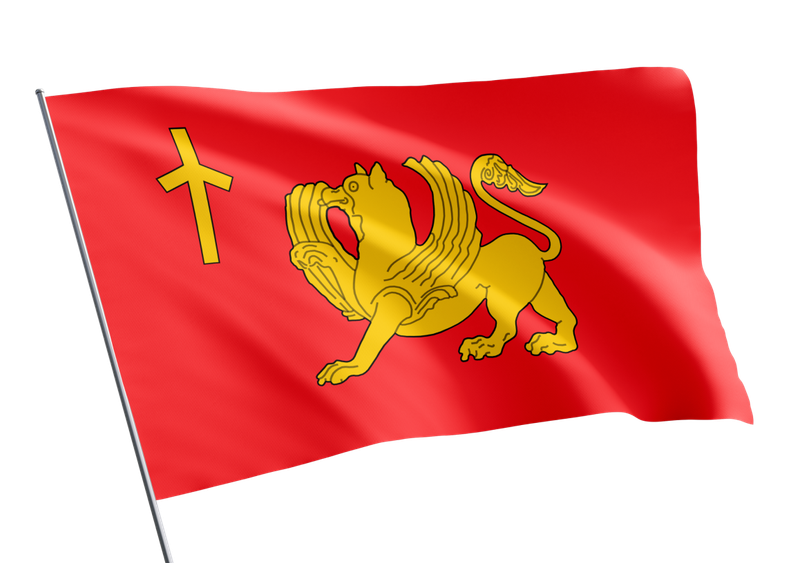
Flag of the Kvareli Municipality
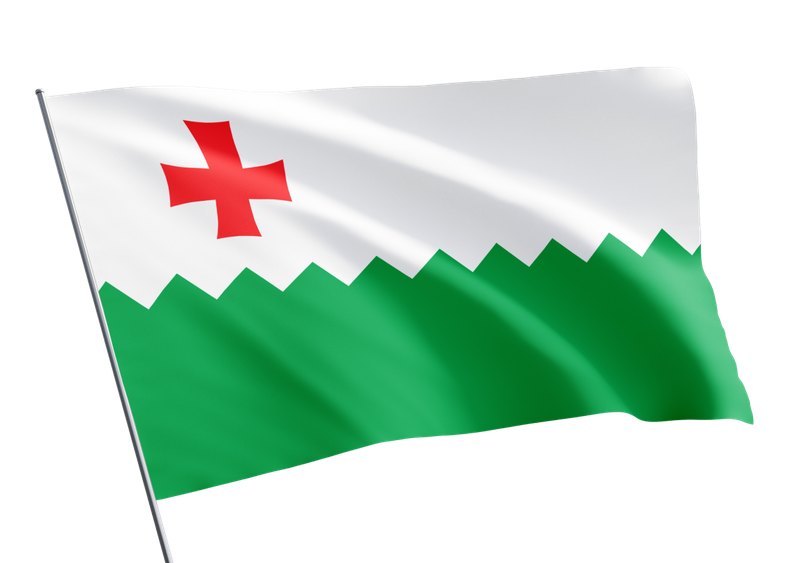
Flag of the Keda Municipality
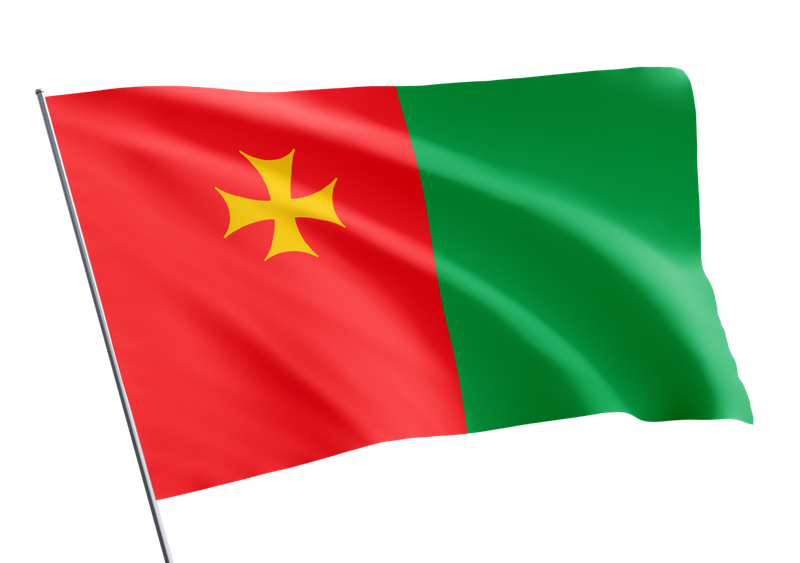
Flag of Kobuleti Municipality

Flag of the Lagodekhi Municipality
Flag of Lanchkhuti Municipality

Flag of the Lentekhi Municipality

Flag of Marneuli Municipality
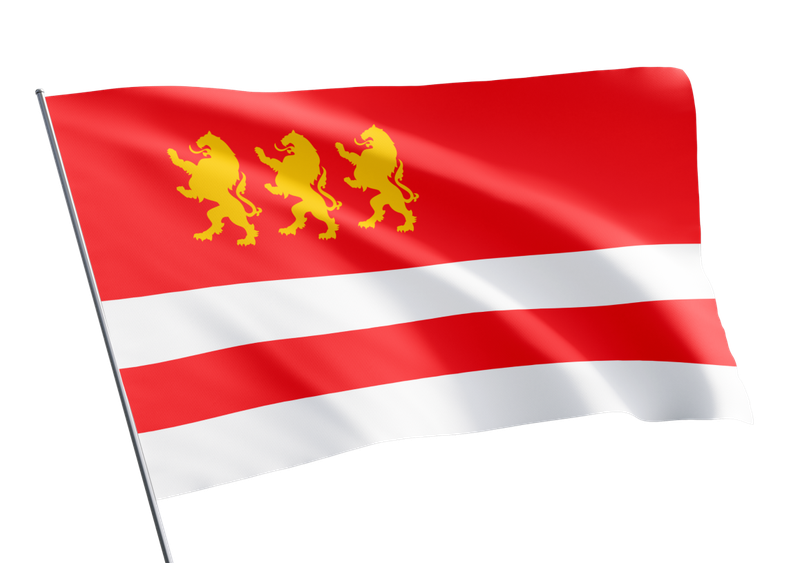
Flag of Martvili Municipality
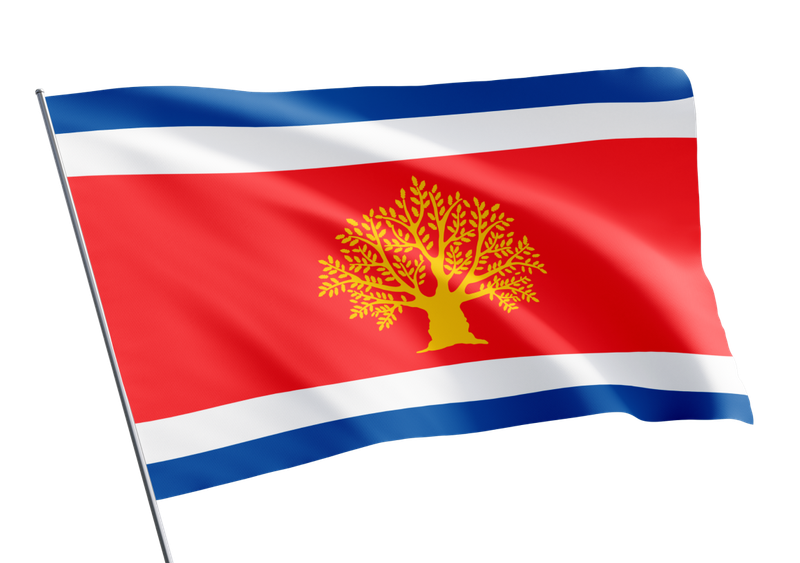
Flag of the Mestia Municipality
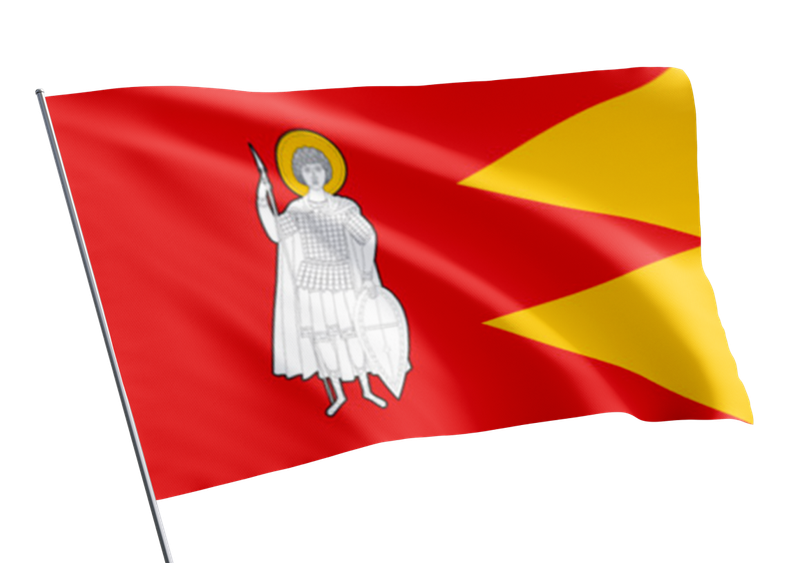
Flag of the Mtskheta Municipality
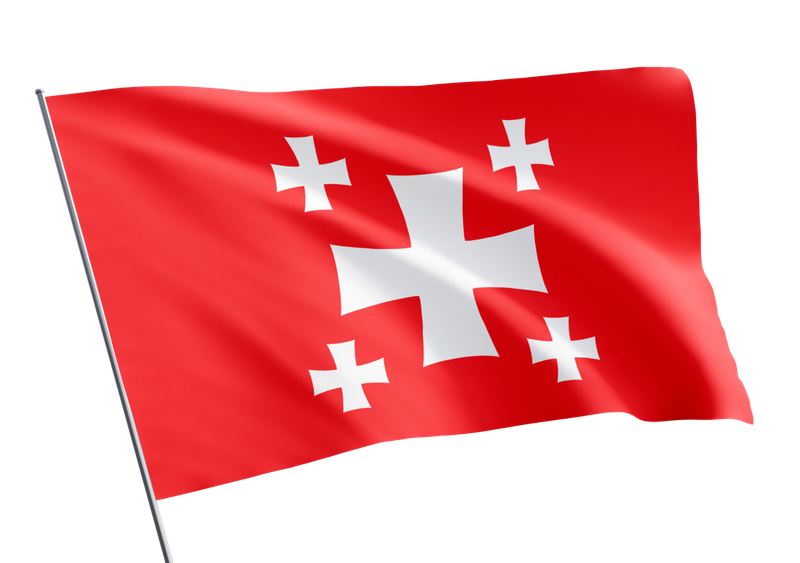
Flag of Ninotsminda Municipality

Flag of the Ozurgeti Municipality
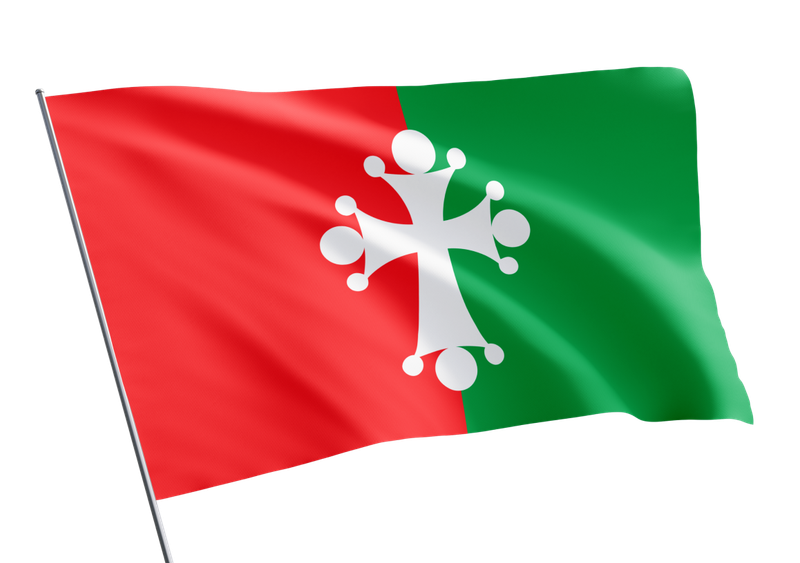
Flag of the Onsky Municipality
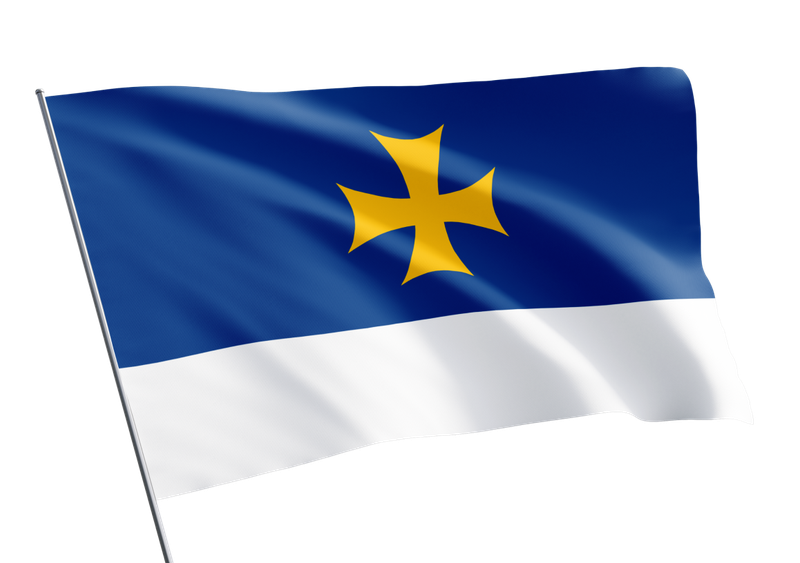
Flag of Sagarejo Municipality
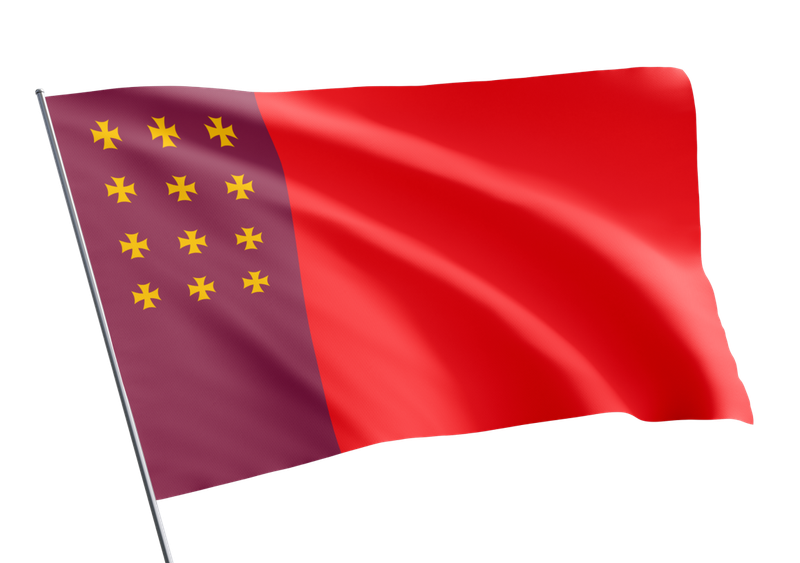
Flag of Samtredi Municipality
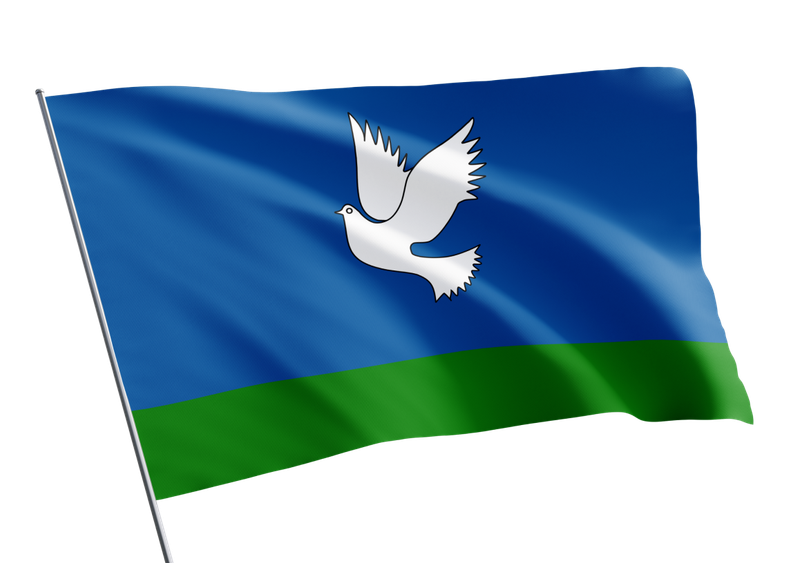
Flag of Sachkhere Municipality
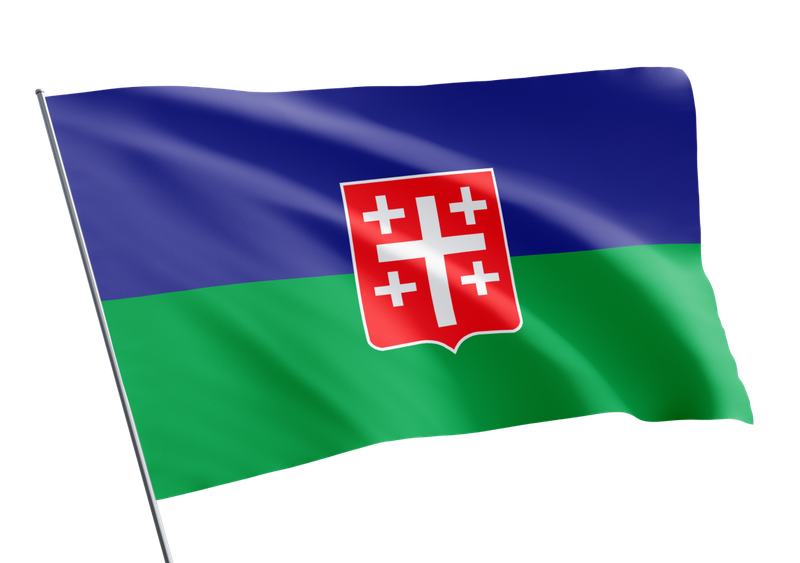
Flag of Senaki Municipality
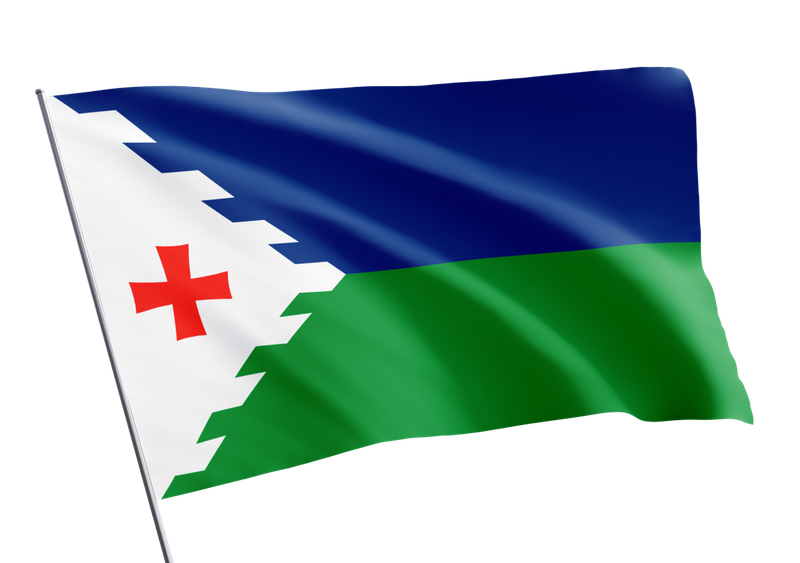
Flag of the Sighnaghi Municipality
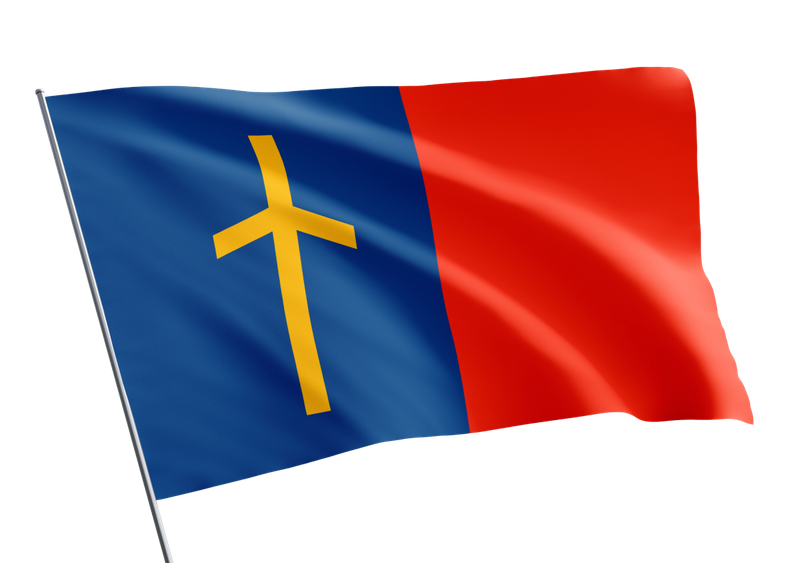
Flag of the Sukhumi municipality
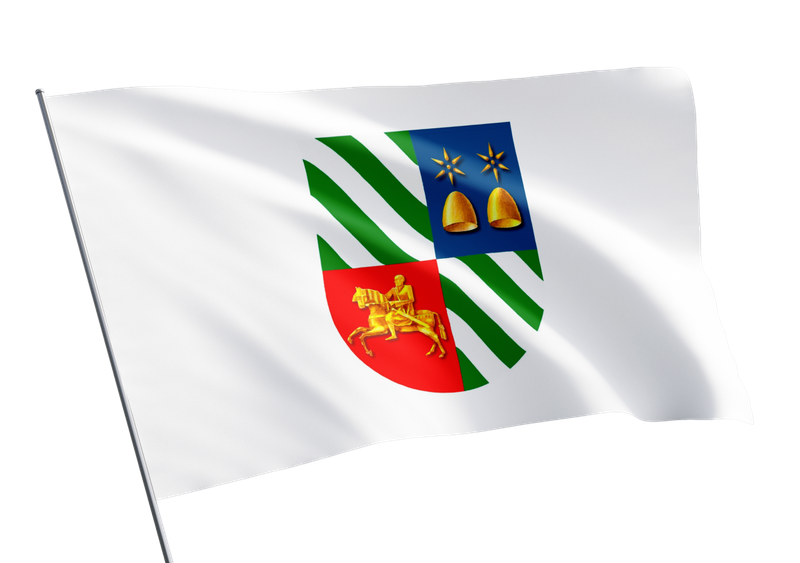
Flag of the Telavi Municipality
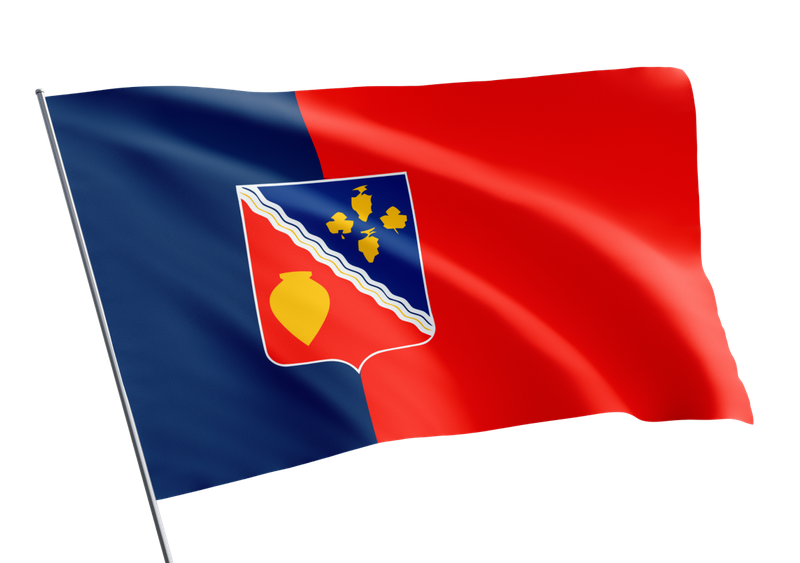
Flag of the Terzhol municipality

Flag of Tetritskaro Municipality
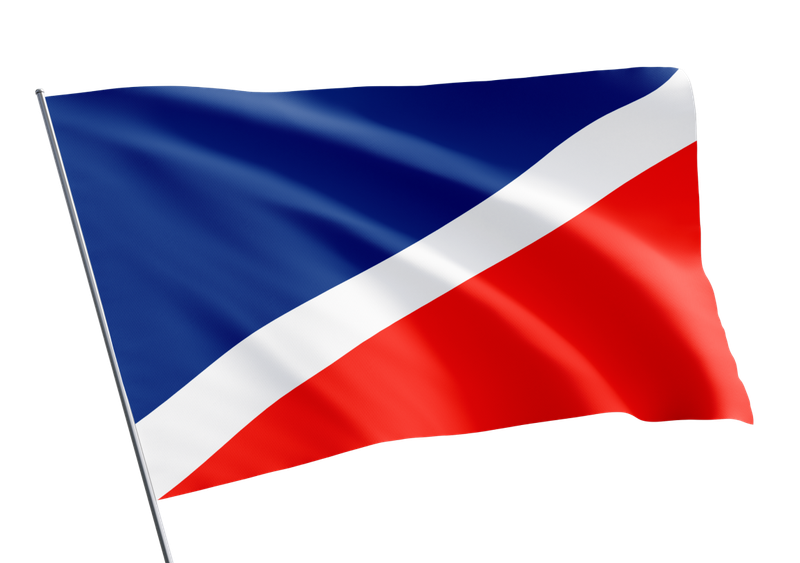
Flag of Tianeti Municipality
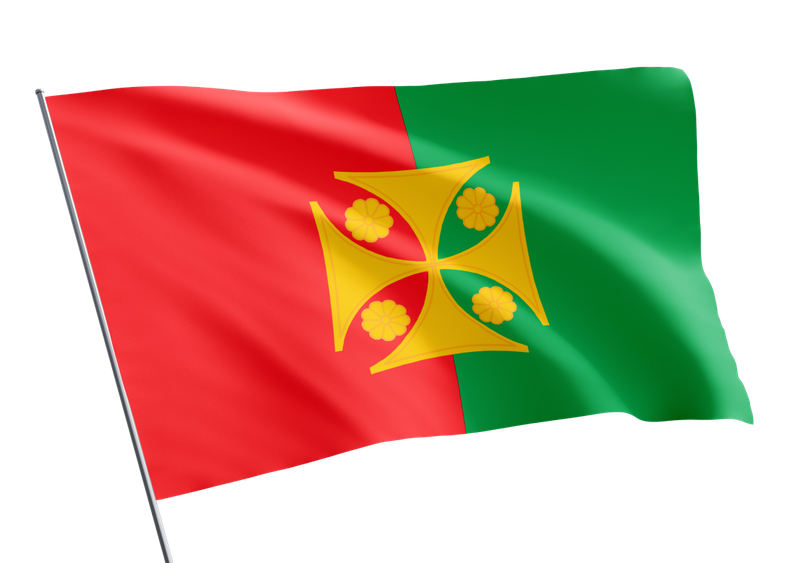
Flag of the Tkibuli Municipality
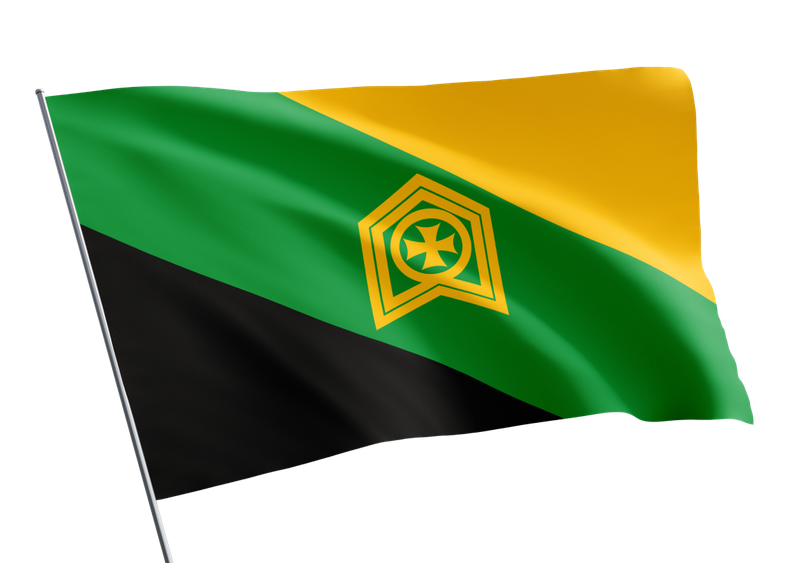
Flag of the Kharagauli municipality
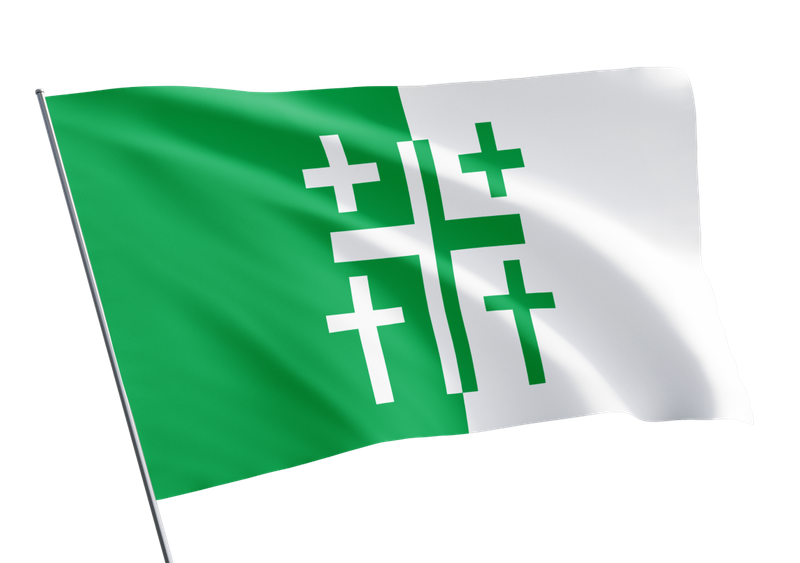
Flag of Khashuri Municipality
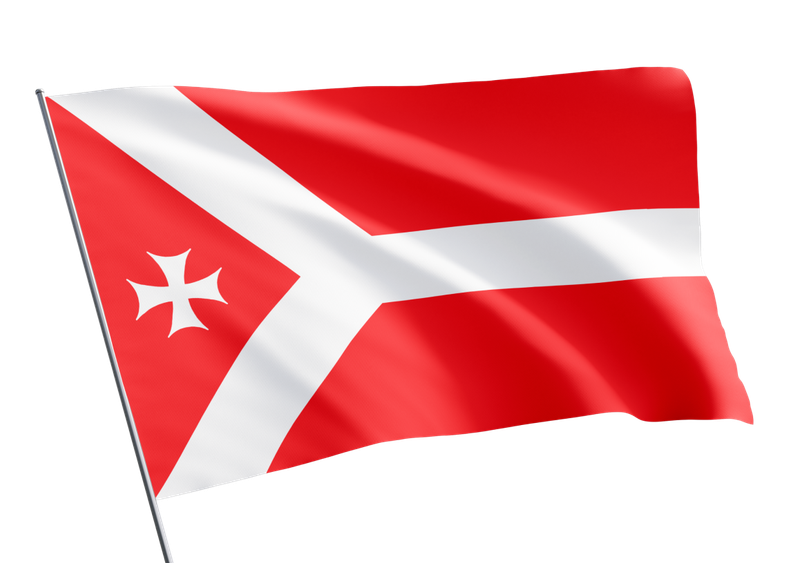
Flag of Khelvachauri municipality
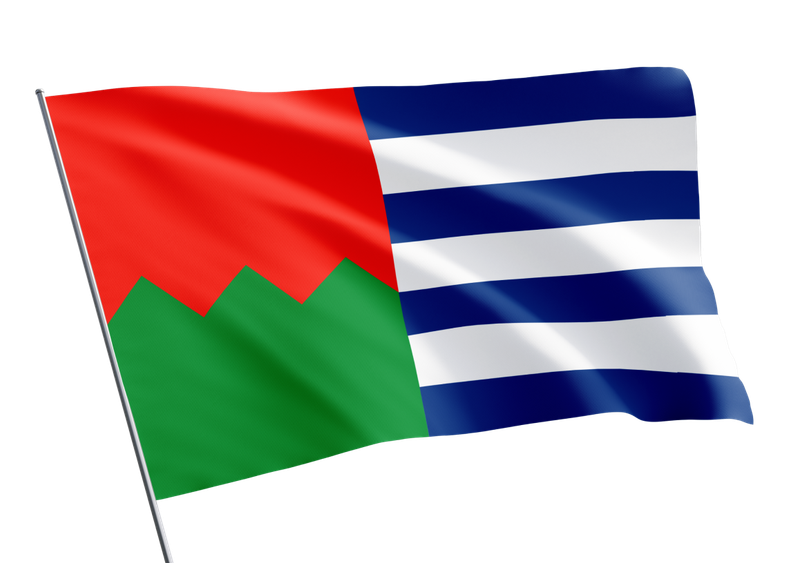
Flag of the Khobi Municipality
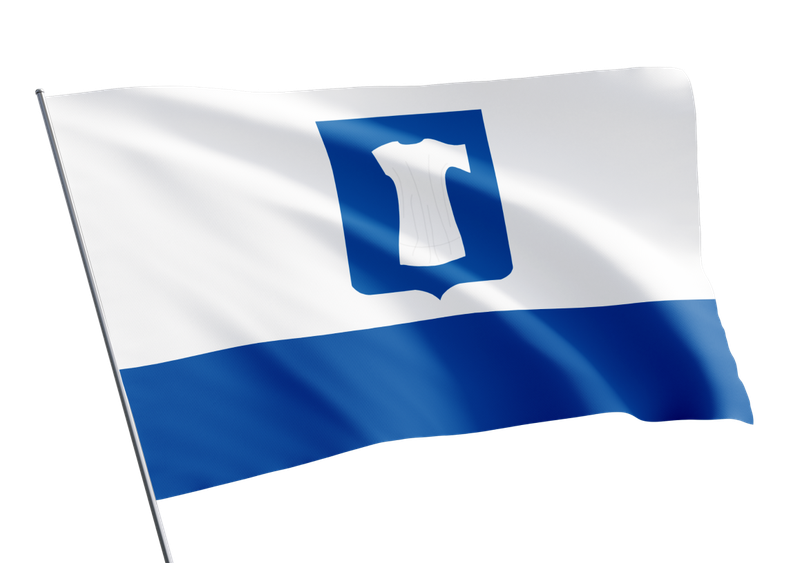
Flag of the Khonia Municipality
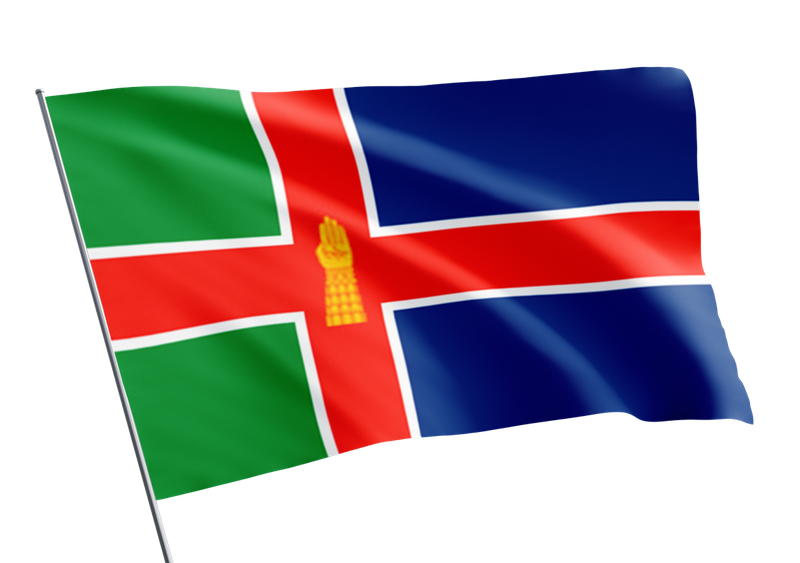
Flag of the Khulo Municipality
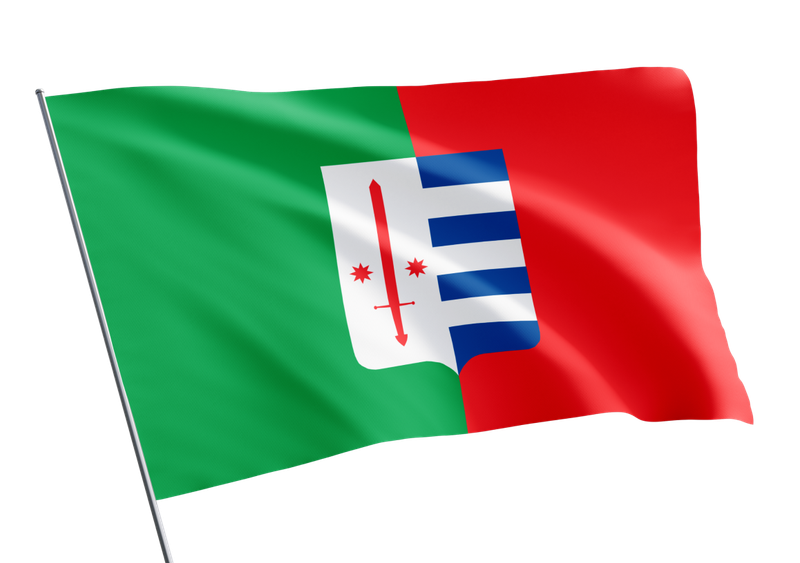
Flag of the Tsageri Municipality
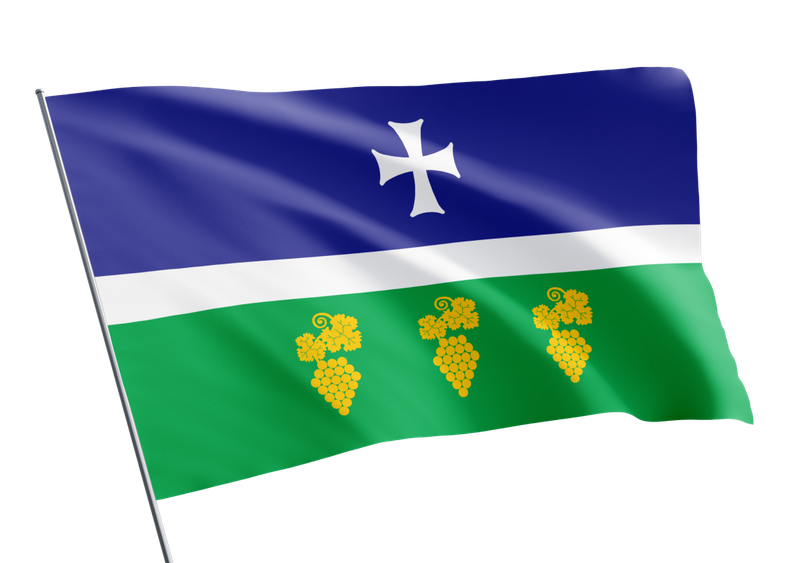
Flag of the Tsalenzhikha Municipality
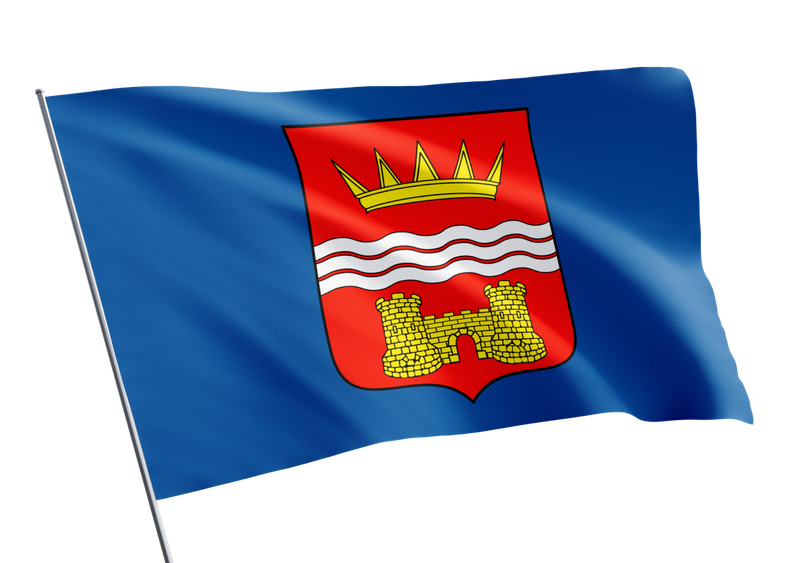
Flag of the Tsalka Municipality
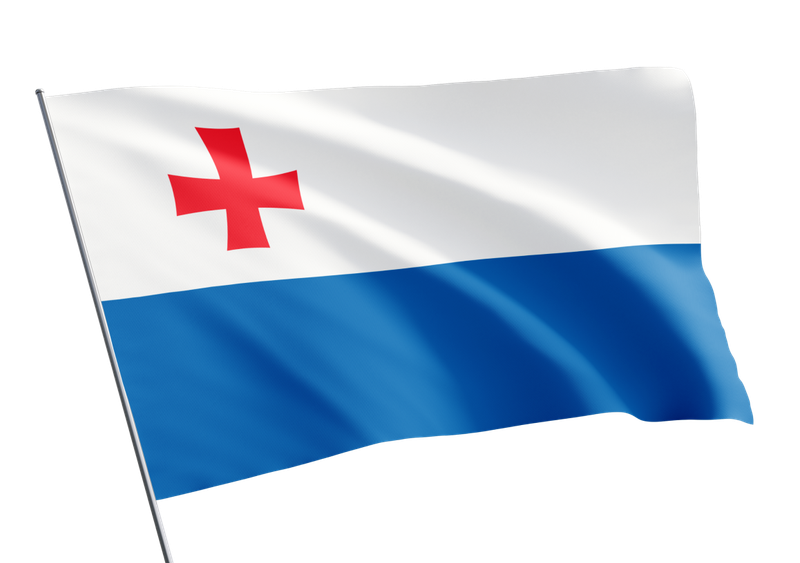
Flag of the Tskhaltubo Municipality
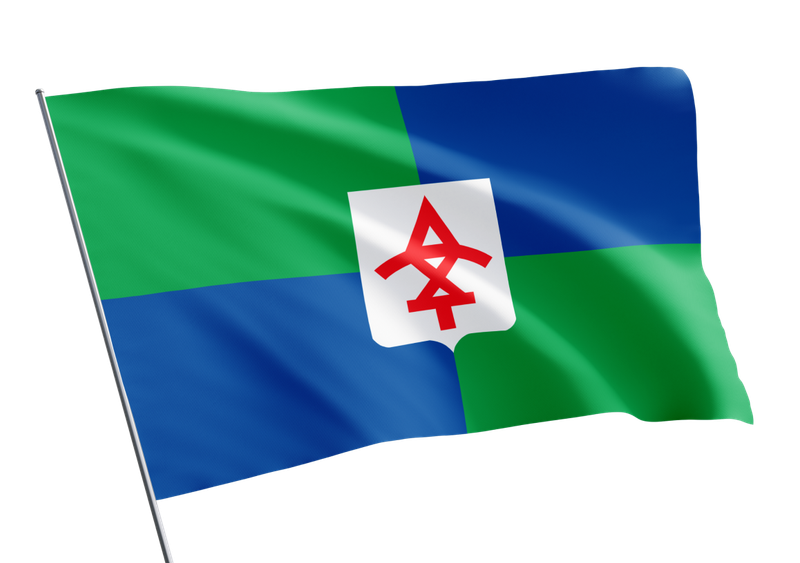
Flag of the Chiatura Municipality
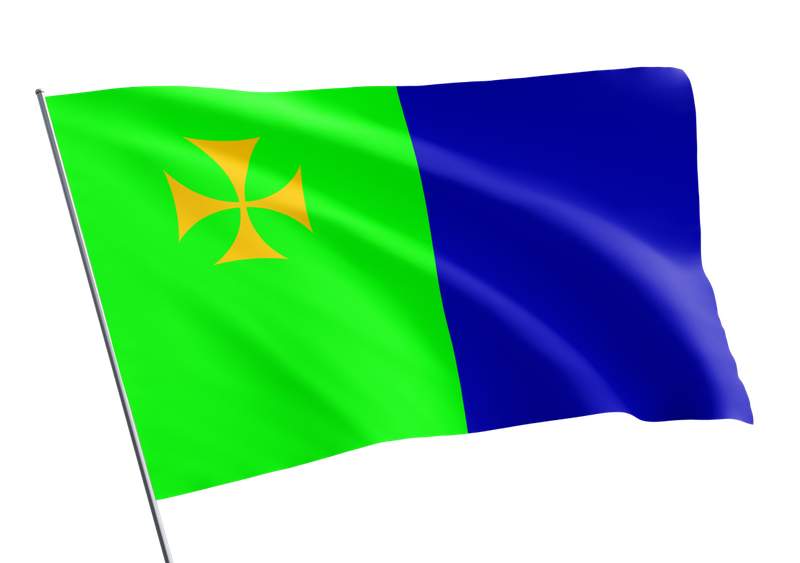
Flag of the Chokhataur municipality
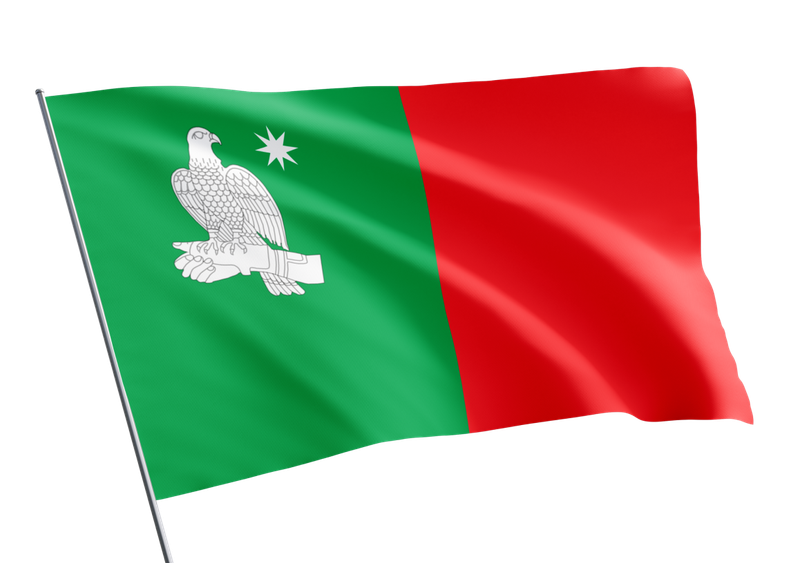
Flag of Chkhorotsku municipality
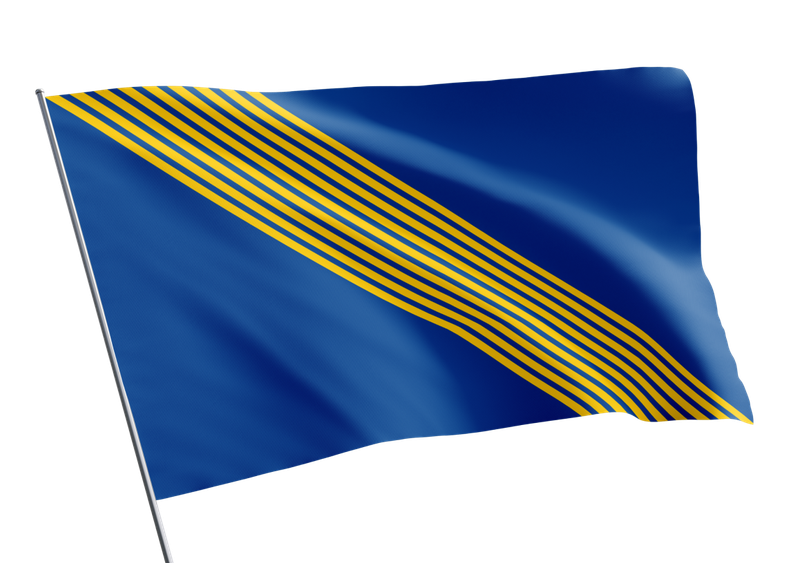
Flag of the Shuakhevsky municipality
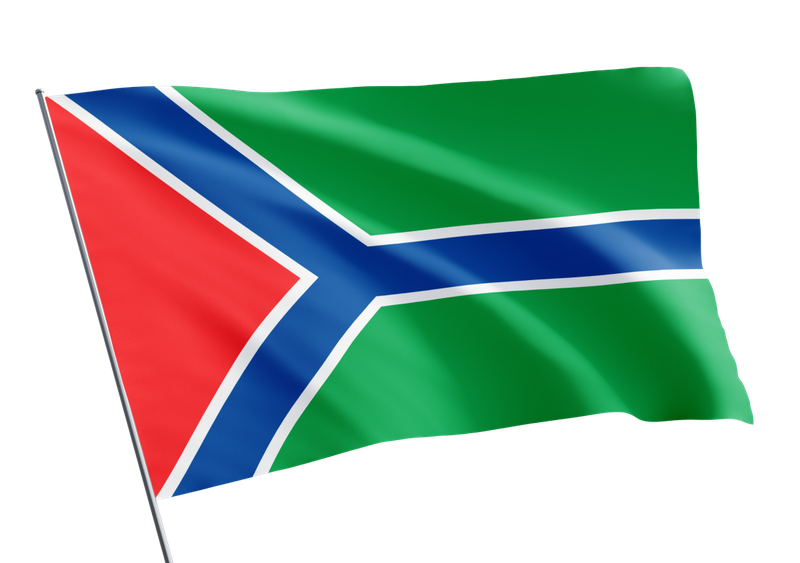







33 comments
Log in to leave a comment
А что насчëт флага Грузии, хочу отметить, что цвета действительно отражают характер народа - дружелюбные и храбрые!